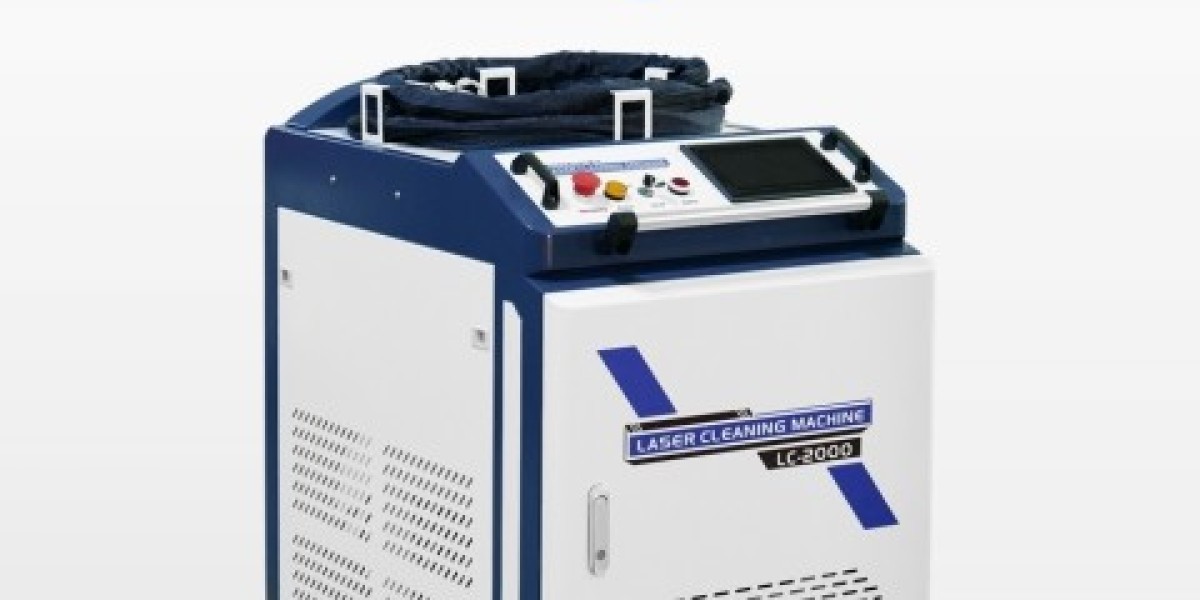In the realm of industrial cleaning, laser cleaning machine have emerged as a revolutionary technology, offering efficient and eco-friendly solutions for removing contaminants from various surfaces. From rust and paint to grease and oxides, laser cleaning has become increasingly popular across industries for its precision and effectiveness. In this guide, we'll delve into what laser cleaning machine are, how they work, their applications, benefits, and considerations for choosing the right one for your needs.
What is a Laser Cleaning Machine? A laser cleaning machine is a high-tech tool that utilizes laser beams to remove unwanted materials such as rust, paint, oil, grease, oxides, and other contaminants from surfaces. Unlike traditional methods like sandblasting or chemical cleaning, laser cleaning is non-contact, precise, and environmentally friendly.
How Does it Work? Laser cleaning works through a process called laser ablation. When a high-intensity laser beam is focused on a surface, it rapidly heats and vaporizes the contaminants without damaging the underlying material. The energy from the laser beam breaks down the unwanted substances into gas or plasma, which is then easily removed.
Key Components of a Laser Cleaning Machine:
- Laser Source: Generates high-intensity laser beams.
- Optics System: Focuses and directs the laser beam precisely onto the surface.
- Control System: Manages parameters such as laser intensity, scanning patterns, and automation.
- Exhaust System: Collects and removes debris generated during the cleaning process.
Applications of Laser Cleaning Machines:
- Industrial Maintenance: Removing rust, paint, coatings from metal surfaces.
- Historical Restoration: Cleaning delicate artifacts and monuments without causing damage.
- Automotive Industry: Preparing surfaces for welding, bonding, or painting in car manufacturing.
- Aerospace: Cleaning turbine blades, engine parts, and aerospace components.
- Electronics: Removing oxides and residues from electrical components.
Benefits of Laser Cleaning Machines:
- Precision: Allows selective cleaning without damaging the substrate.
- Environmentally Friendly: Eliminates the need for chemicals and produces minimal waste.
- Safety: No use of abrasive materials or hazardous chemicals, reducing health risks for operators.
- Cost-Effective: Reduces labor costs and downtime compared to traditional methods.
- Versatility: Suitable for various materials including metal, stone, concrete, and more.
Considerations for Choosing a Laser Cleaning Machine:
- Power and Pulse Duration: Match the machine's power to your cleaning requirements.
- Laser Wavelength: Different wavelengths are suitable for different materials.
- Automation and Control Features: Look for machines with user-friendly interfaces and automation capabilities.
- Portability: Consider whether you need a stationary or portable system depending on your application.
- Safety Features: Ensure the machine complies with safety standards and has proper shielding to protect operators.
Conclusion: Laser cleaning machines offer a cutting-edge solution for surface cleaning across various industries. Their precision, eco-friendliness, and versatility make them indispensable tools for removing contaminants efficiently. By understanding how laser cleaning machine works, its applications, benefits, and considerations, you can make informed decisions when integrating this technology into your cleaning processes, paving the way for higher efficiency and superior results.







